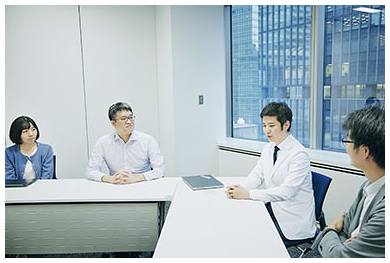 |
|||
|
|
|||
|
NTT IOWN Technology Report Vol. 22, No. 1, pp. 85–89, Jan. 2024. https://doi.org/10.53829/ntr202401sw1 Release of NTT IOWN Technology Report 2023AbstractNTT Research and Development Planning Department released the NTT IOWN Technology Report 2023, which summarizes its vision for the Innovative Optical and Wireless Network (IOWN), the concept of which was unveiled in 2019, and technologies intended to make the world a better place for everyone. This article provides an overview of this report. Keywords: technology, future vision, IOWN 1. Text structure of NTT IOWN Technology Report 2023Since unveiling the concept of the Innovative Optical and Wireless Network (IOWN) in 2019, we have diligently advanced research and development (R&D) efforts to make it a reality. In March 2023, we finally commenced the deployment of the APN IOWN1.0 service, marking the transition from concept to implementation. In NTT IOWN Technology Report 2023, we use the keywords “light” and “AI” to consider a future society achieved with IOWN. We review the formation of the concept of IOWN and introduce the status of initiatives that are moving into the implementation phase and that of initiatives to use artificial intelligence (AI), which is closely related to IOWN. We also discuss the All-Photonics Network (APN) and photonics-electronics convergence devices, which are the two pillars that support IOWN, and Digital Twin Computing (DTC), which is being implemented as value creation using IOWN. Finally, we envision what services and solutions will be possible and how our lives will change in 2030, when these technologies develop and IOWN becomes more widespread, based on discussions among experts in each field. 2. Kickstart IOWN2.1 Disruptive surge in data and energy consumptionTo address the multifaceted challenges our society faces today, we must reconsider our approach to information processing. Even though digital technology has offered solutions to many of our problems, the current information-processing environment is rapidly approaching its limits. Consider the exponential growth in the volume of data we handle each year. As data volume escalates, so does the energy consumption of datacenters. Digitalization entails the generation and utilization of vast quantities of data, inevitably accompanied by the energy needed for data processing and storage. Unless we address this issue, we will not be able to reap the full benefits of a digital society and AI. These issues compelled us to turn to optical technology. Electrical circuits consume immense energy when processing great volumes of data, particularly over extended transmission distances. To process a large amount of data within the same timeframe, higher operating frequencies become necessary, causing energy consumption to increase even further. In contrast, light requires minimal power consumption, even with increased transmission distances or operating frequencies. Our extensive research into information processing via light spans several decades, dating back to our pioneering role as the world’s first commercial producer of optical fiber for data transmission. Once optical technology transformed how we transmit data, we then began exploring its potential application in processing it. Thus, the concept of IOWN was born. As a next-generation communication network paradigm, IOWN will harness light for all facets of information, from transmission to processing. By using optical devices and embedding optical technology in everything from network infrastructure to terminal processing, IOWN promises three significant advantages: high capacity, low latency, and low power consumption. In terms of capacity, transmission capabilities could increase by a factor of 125, while latency measured by end-to-end delay could diminish to 1/200th of present durations. Regarding power consumption, complementing fiber optic cables with optical (wavelength) through-transmission devices and photonics-electronics convergence elements within the information-processing infrastructure could lead to 100-fold efficiency gains. Following the unveiling the concept of IOWN in 2019, we have diligently pursued R&D, culminating in the launch of the APN IOWN1.0 service in March 2023. IOWN is progressing from the conceptual phase to tangible applications. Services are primarily tailored to specific industries and contexts. However, as AI and robotics are introduced into more and more applications, industry collaboration via IOWN is poised to accelerate. Domestically, IOWN is expected to encourage digitalization and data utilization not only in manufacturing, urban development, healthcare, and finance but throughout government services, education, and many other social applications and industries. This trend is not confined to domestic industries; IOWN’s impact will extend around the world, as it fosters flexible collaboration across borders through DTC. 2.2 IOWN’s vital role in spreading AITo ensure the well-being of individuals, we must comprehend the diverse values held by a broader spectrum of people. As society confronts increasingly complex and dire challenges, we need to absorb and analyze information on an unprecedented scale to forecast future developments. Therefore, AI plays a pivotal role. The surging expectations for AI seen across the world today are highly relevant to IOWN. Centralized collection is an impractical approach to the diverse array of data sources, encompassing not just vehicles and factories but also individuals and the environment, and countless other sensors. Therefore, asynchronous distributed learning, wherein AI systems in diverse domains collaborate and share knowledge, is expected to make strides. IOWN will serve as the communication infrastructure for such systems, enabling AI to process vast amounts of information and enhance their interactions. This shift is particularly relevant to our longstanding commitment to the R&D of natural-language-processing technology, which enables AI to understand and generate everyday human language. We are leveraging our expertise to accelerate R&D of our own large language model (LLM) in anticipation of AI making even greater inroads in society. LLMs are a rapidly evolving branch of natural language processing. LLMs, such as OpenAI’s GPT-4, are gaining widespread adoption in Japan and are expected to have substantial impact on business. Although such LLMs exhibit remarkable capabilities, they still have difficulty in seamlessly collaborating with humans or growing alongside us as partners in our life. We aspire to develop an AI cognitive engine capable of natural collaboration with people across various environments that can contribute to the well-being of each individual. Leveraging AI models that have the same interfaces as humans, we aim to create versatile software robots capable of interactive collaboration with humans. 3. Two pillars supporting IOWN3.1 Network: APNNetworks and computing are the two pillars that support IOWN as we begin to deploy it. Regarding networks, we are developing an innovative network technology called the APN. The APN is a new network foundation that makes use of optical communication technology. By transmitting information in the form of light, optical communication technology allows more information to be transmitted in a shorter time than electronic signals. By converting all connections to direct optical paths, we will be able to construct networks that have far higher capacity, lower latency, and are more secure than ever before. It should also be noted that multiple networks can be created over a single optical fiber by altering the wavelength. This means the APN could be used to create distinct networks for different purposes, such as one using conventional Internet Protocols alongside another using dedicated medical protocols. The APN currently provides 100-Gbit/s private connections, and users have exclusive use of optical wavelengths from end to end. This on its own leads to a 200-fold reduction in latency and makes it possible to visualize and adjust latency. The APN uses three types of equipment: APN terminal equipment, APN-G (gateway), and APN-T (transceiver). Sales of these devices are now underway. Many applications that do not tolerate delays, such as telemedicine, autonomous vehicles, and real-time financial transactions, will be enabled by APN low-latency communications. These applications are becoming increasingly important in the digital world. Low-latency communications can also encourage the development of new applications. For example, real-time virtual reality/augmented reality, real-time AI, and real-time robot control. These applications require networks capable of low-latency communications, so we are currently co-creating with partner companies in various fields through the APN. The APN will also have a significant impact on the datacenter business. NTT has an extensive track record of colocation, in which it operates datacenters for numerous companies, with the third-largest share in the global market. By linking datacenters through the APN, we will be able to construct an ultra-high-speed, ultra-high-capacity network on a global scale. This network will reinforce data logistics worldwide and increase the accessibility of cloud services. Datacenters must become more varied and complex due to the need to decentralize datacenters to balance disaster risk and safely manage data close by to respond to various problems. The introduction of the APN will not only enhance our datacenter capabilities but also usher in a novel approach to crafting unique communication environments tailored to the diverse needs of various companies. 3.2 Computing: Photonics-electronics convergence devicesOn the computing side, the core pillar is our development of photonics-electronics convergence devices. Such devices integrate electronic and photonic elements into a single system to increase the speed of data transfer and improve energy efficiency. The introduction of these devices inside the APN components is expected to further reduce power consumption of the APN and increase its capacity. In discussing the deployment of photonics-electronics convergence devices, we should not ignore the role of disaggregated computing. This computing model physically separates computing resources (central processing units, memory, storage, etc.) from physical servers and allows these components to be freely combined and used over the network. This enables more efficient resource use and greatly increases system scalability and flexibility. Disaggregated computing is playing an important role in enabling new computing paradigms such as cloud computing and edge computing. It could also be useful for applications that need to process large amounts of data at high speed such as AI and big data analytics. Demand for disaggregated computing is expected to manifest particularly in large-scale datacenters and cloud environments. Because many users simultaneously perform a variety of tasks in these environments, resource demands are highly dynamic. Disaggregated computing is capable of flexibly responding to these demands. We are also developing a computing platform for disaggregated computing with commercial deployment targeted for 2026. To this end, we are also developing operating systems, controllers, and applications that can run on this platform, which is expected to be part of the infrastructure underlying IOWN. In June 2023, NTT Innovative Devices Corporation was established as a manufacturing company specializing in photonics-electronics convergence devices to expedite the transformation from concept to reality. To enhance the progress of R&D and the practical application of IOWN-related technologies, including the 6th-generaion mobile communication system, we are committing approximately 100 billion yen to the overall IOWN R&D efforts for FY2023. Our ongoing and future financial investments will drive the development of servers such as the disaggregated computing platform, as well as the advancement of services such as DTC. 4. DTC is a new platform for urbanismDTC is one of the applications being developed to create value through the use of IOWN. This is a system that enables users to freely combine multiple digital twins to precisely reproduce comprehensive simulations of people and vehicles in an urban environment that were not previously possible, thereby enabling future predictions and personalized services. Real-world objects, such as automobiles and factory machinery, have been digitally reproduced to improve real-time situational awareness and detect anomalies. DTC will combine these models in countless ways to reproduce the real-world at large scale and high precision. It will even go beyond the reproduction of the physical world to entail virtual representation of interactions with the internal aspects of humans. There are numerous potential use cases for DTC, but we are currently rolling out services and conducting experiments mainly in offices and commercial facilities. Among these, APN IOWN1.0 is already being deployed in a major development being undertaken by Tokyu Land Corporation in Shibuya. This collaborative project between Tokyu Land Corporation, NTT, NTT DOCOMO, and NTT EAST aims to integrate cutting-edge convenience and sustainability into urban development in ways that address environmental and other social concerns. Once DTC is extended to commercial facilities as well as office spaces, remote concierge support and shopping using extended-reality technology could enable highly satisfying shopping experiences tailored to the tastes and preferences of each individual. Foreign visitors to Japan would be able to communicate using real-time translation, and entertainment such as e-sports will become more popular across Japan and abroad. 5. Envisioning the world of 2030 through IOWNAs we introduce IOWN, the proliferation of services and applications harnessing IOWN is poised to shape the future. What sort of world will emerge on the horizon? How will conventional industries and businesses transform? To explore the societal landscape of 2030, we have gathered experts from three distinct areas: a versatile business platformer, healthcare-transforming startup, and researcher re-evaluating the AI-human connection (Fig. 1). We invite you to imagine the societal landscape of 2030 through conversations with these three experts by reading their conversation in NTT IOWN Technology Report 2023 online [1].
6. ConclusionNTT Research and Development Planning Department will continue to release a summary of technology trends and the activities of NTT R&D. NTT IOWN Technology Report 2023 can be downloaded from NTT R&D’s website [1]. Reference
|
|||












